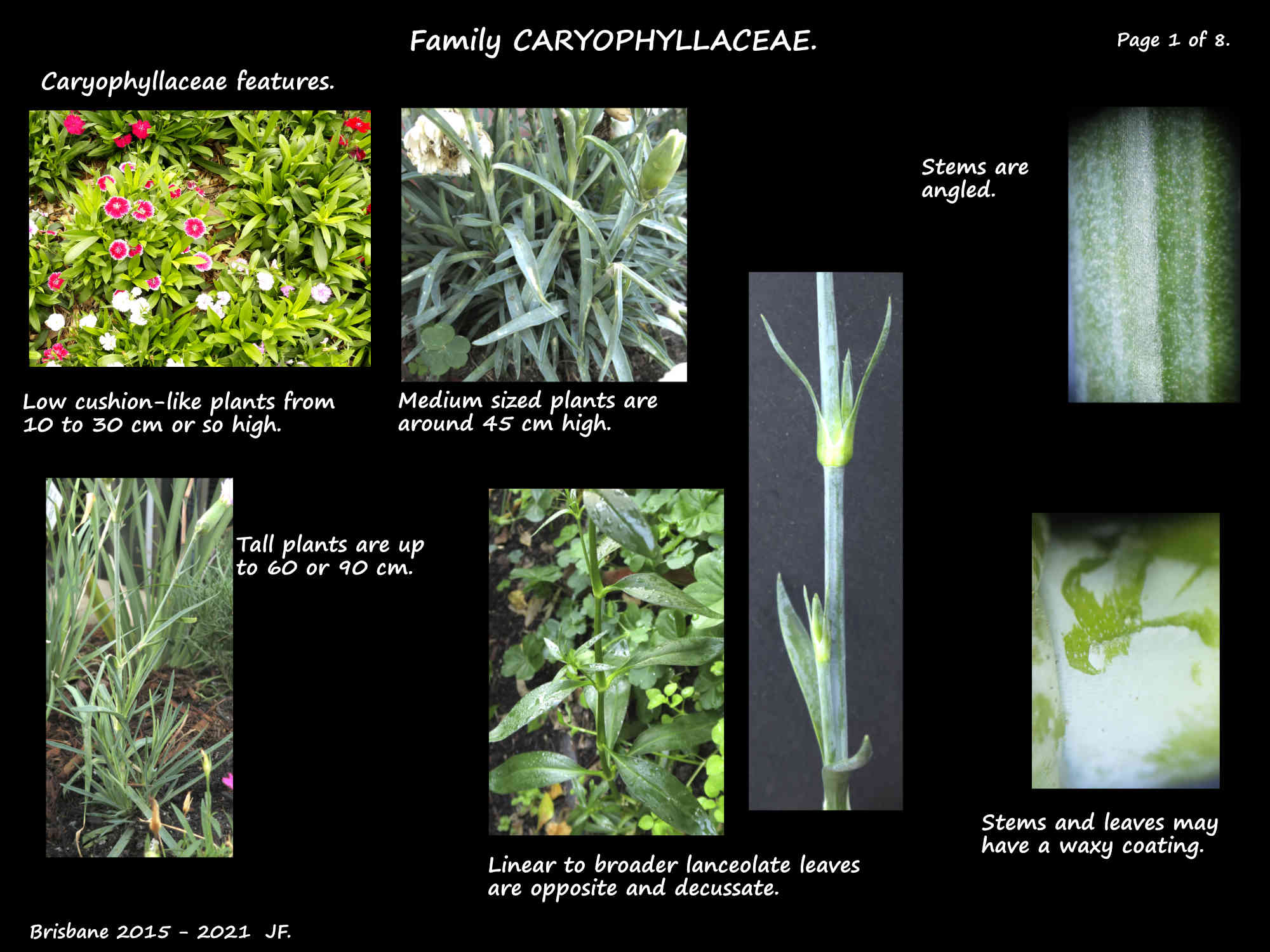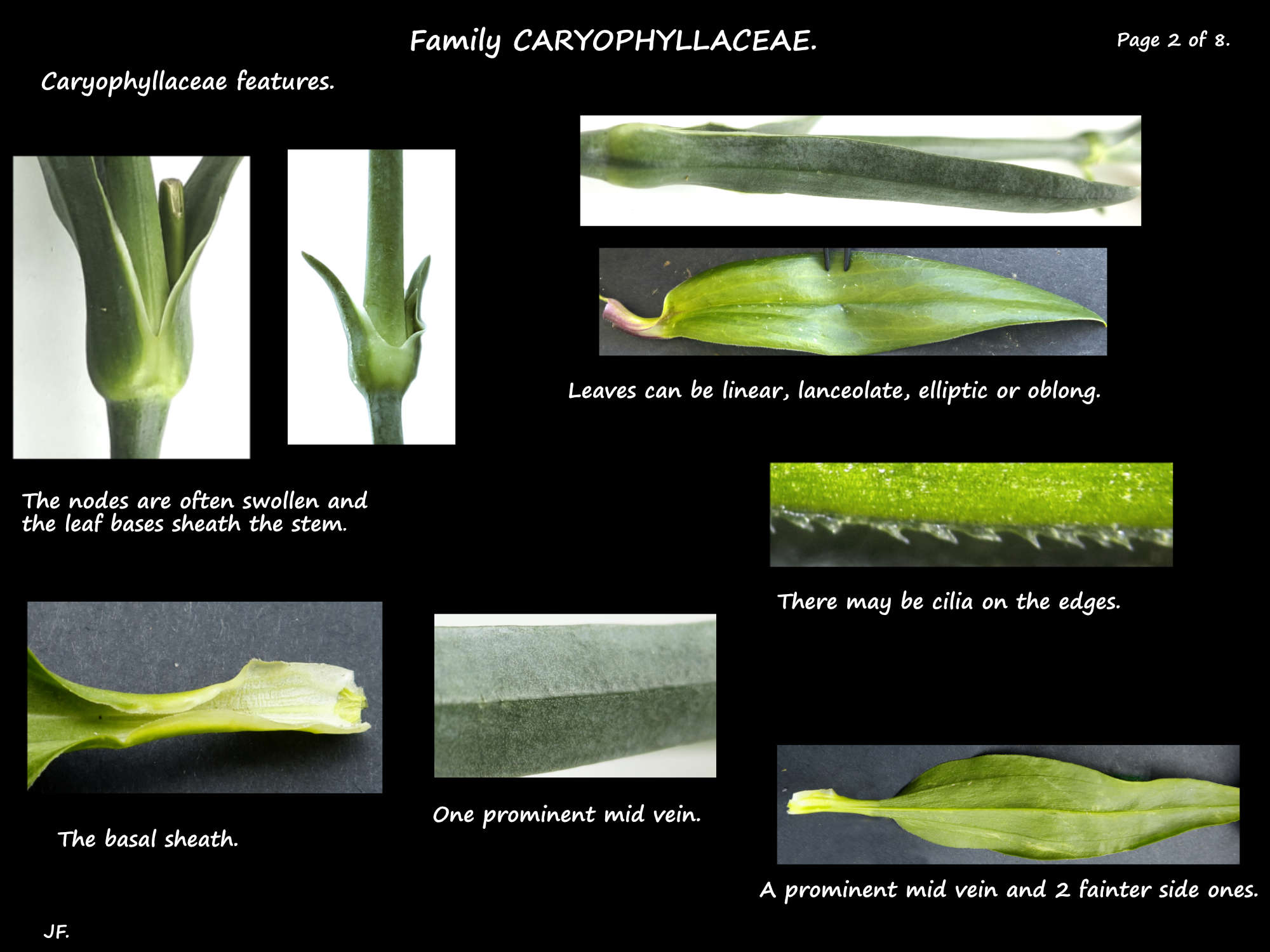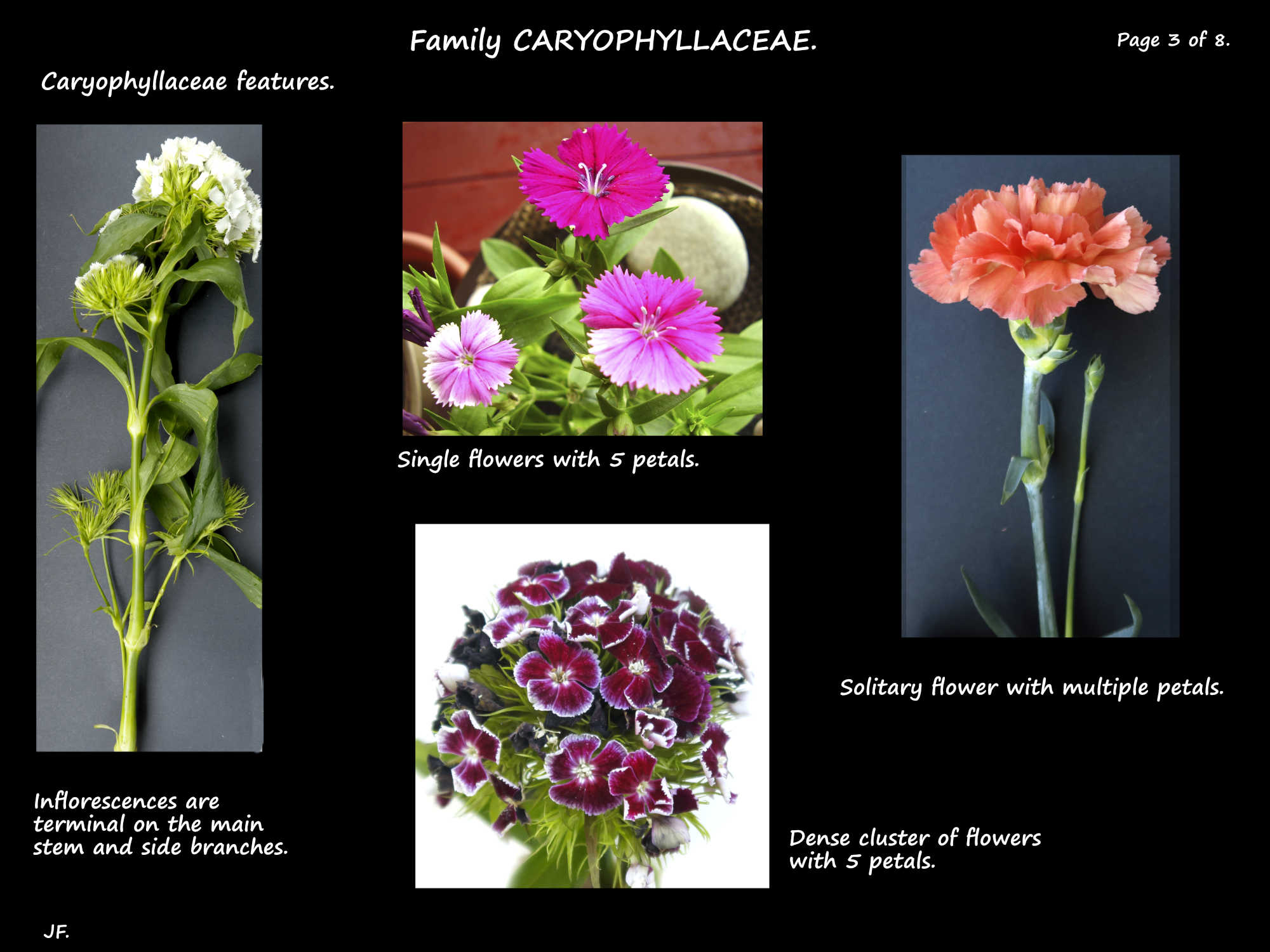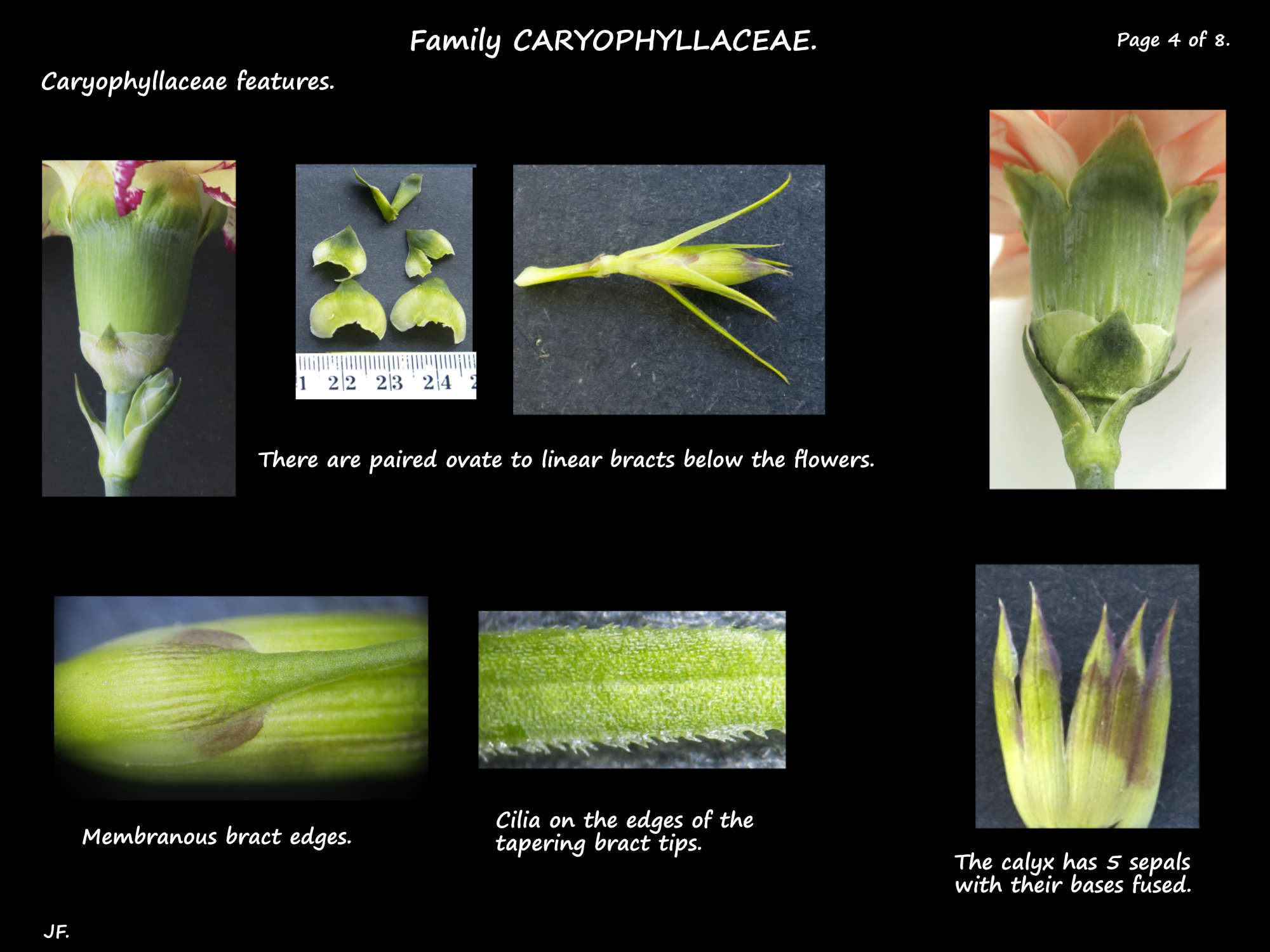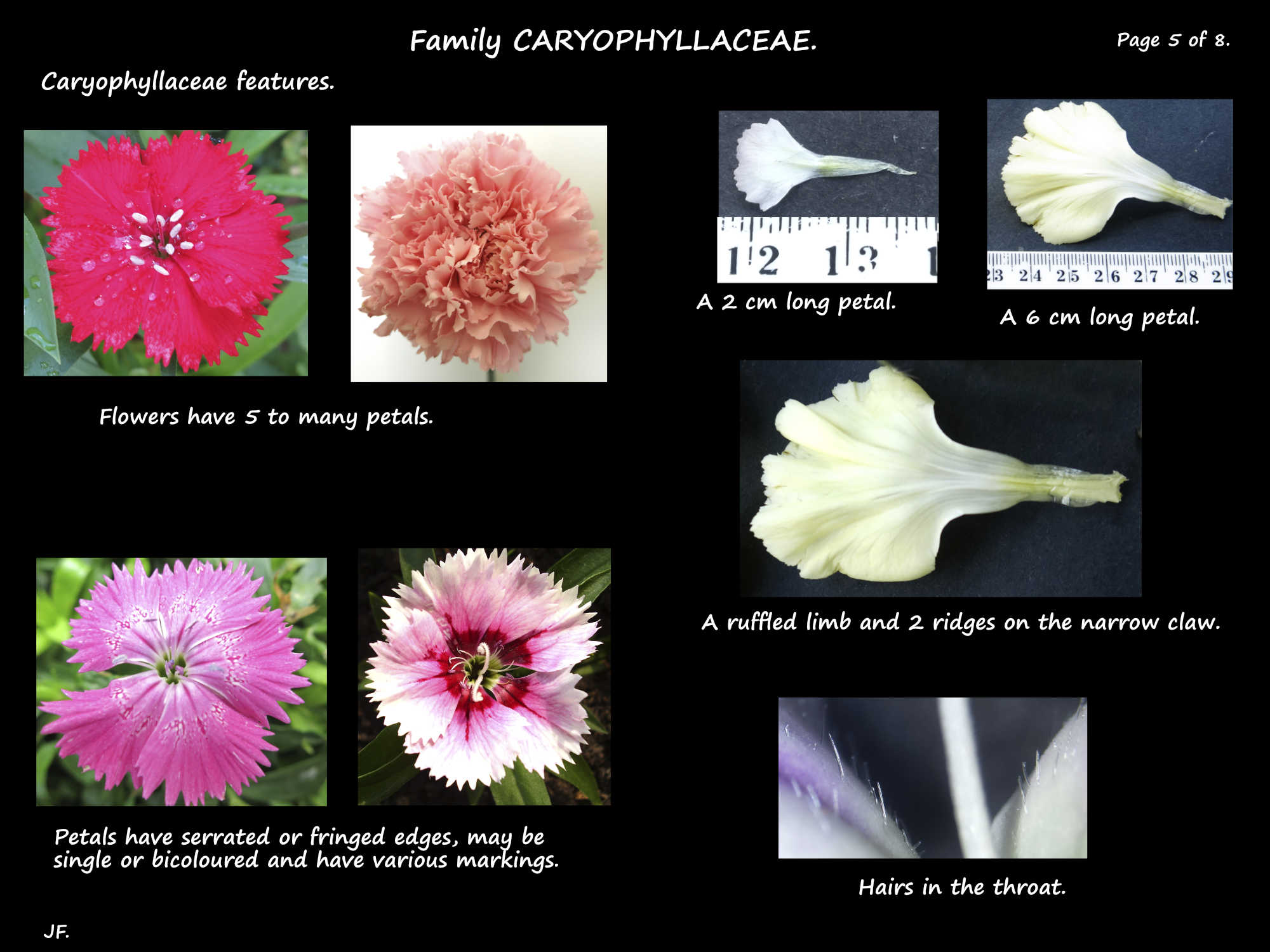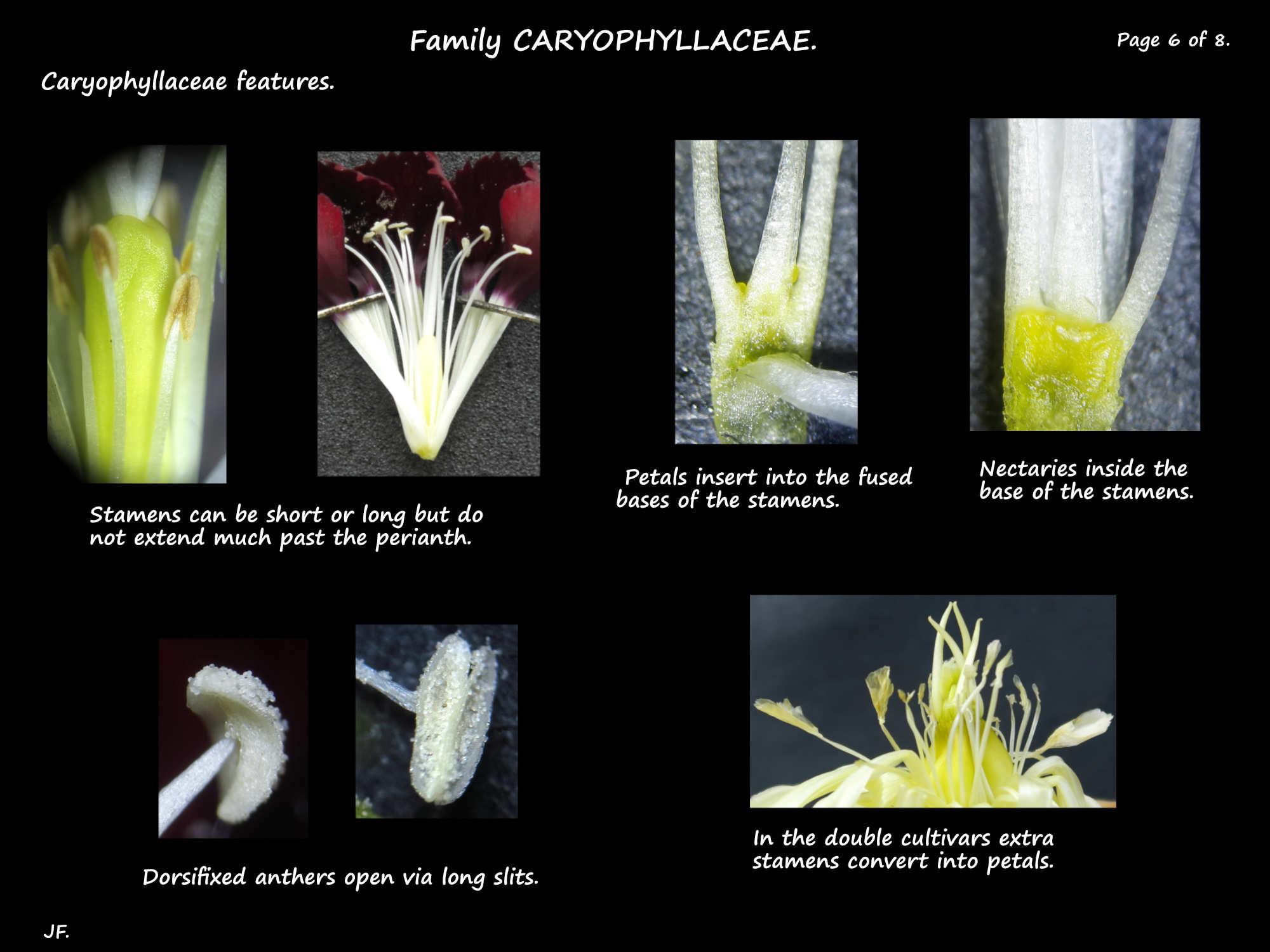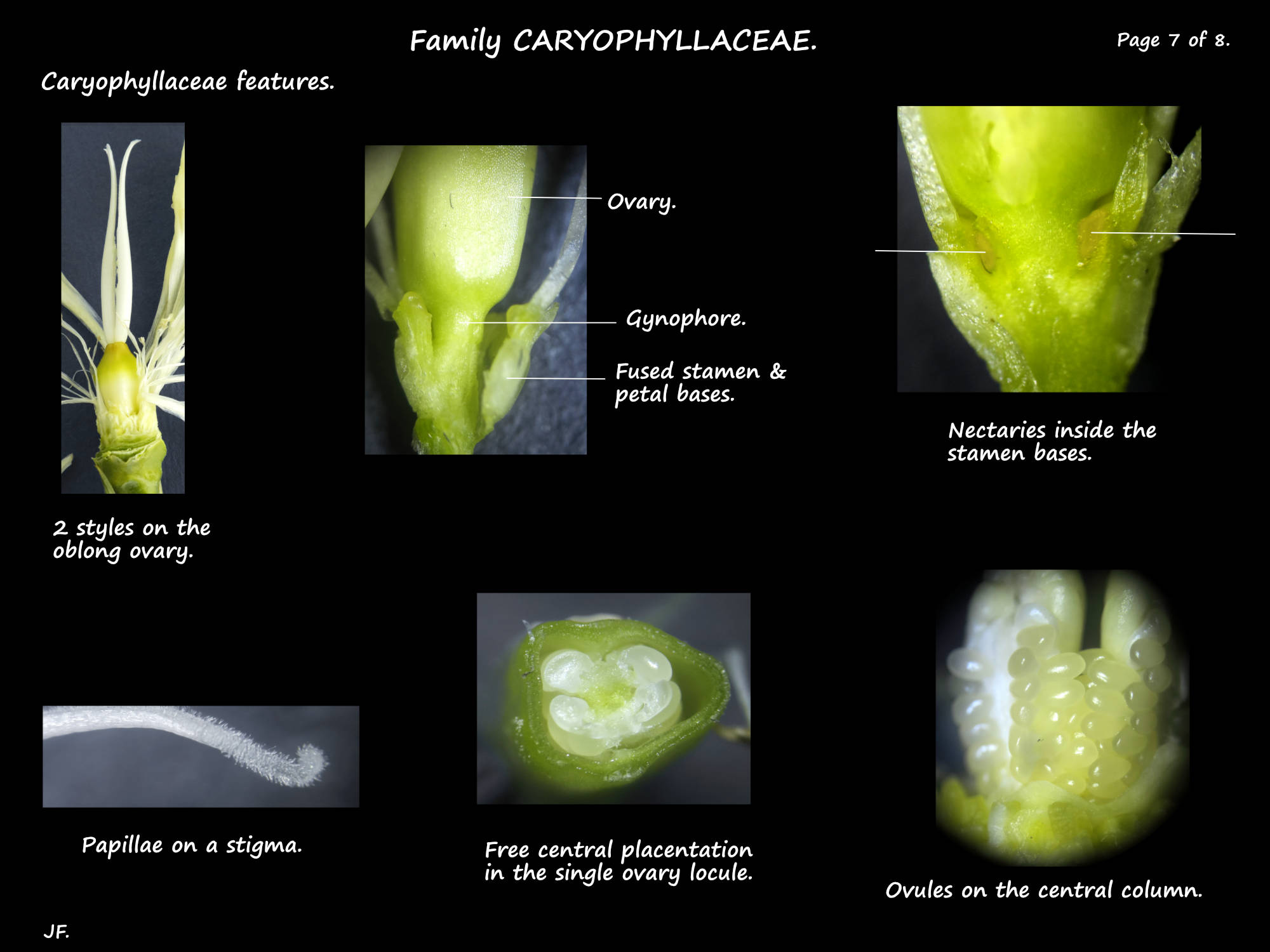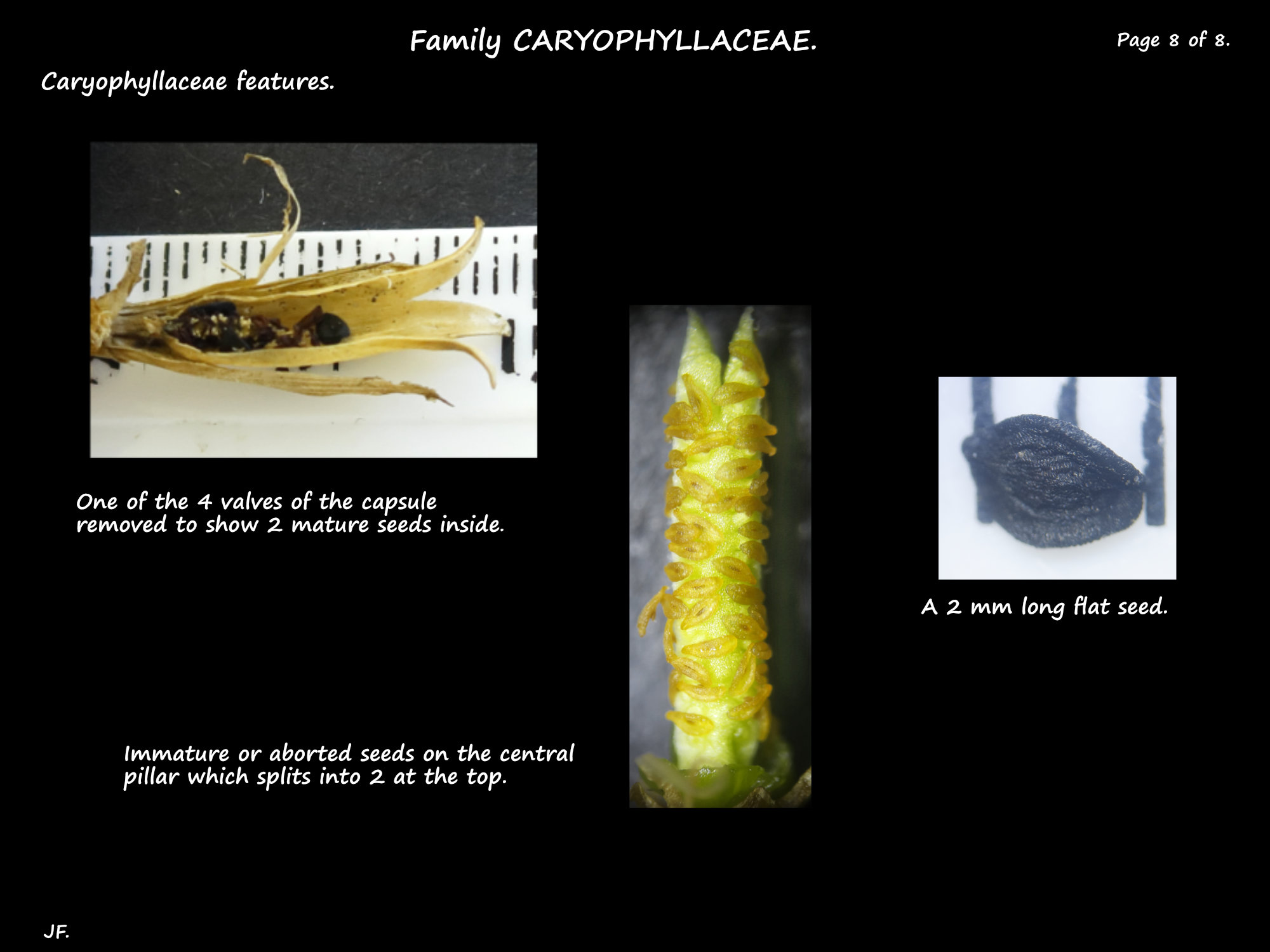Dianthus.
Dianthus species, in family Caryophyllaceae are known as Pinks, Sweet Williams and carnations.
There are around 300 to 337 species from South Africa, Europe and Asia.
They are widely used in gardens and as cut flowers.
Almost all are erect, annual or perennial herbs with a few shrubs to 1 m high.
They have taproots, or thick or thin rhizomes that may be woody.
The stems are solid and the nodes are often swollen.
Young stems are green and the base of older ones may be woody.
The numerous stems are smooth, some are angled and they may be branched.
Some are low growing ground covers that form dense mats or cushions.
Others are erect plants with some being dense and rounded.
Commonly seen small plants are from 10 to 30 cm high, medium around 45 cm and tall ones are up to 60 cm.
There are a few that grow to 2.5 m high.
The narrow, sparse leaves are opposite and decussate.
They have a very short petiole or none at all with the leaf bases sheathing the stem.
The blades are lanceolate, oblanceolate, linear, elliptic or oblong with a pointed tip.
Size varies from a few mms long and wide up to 8 (10 to 15) cm long and 2 cm wide.
They have a prominent midvein and sometimes 2 less distinct side ones.
Some are green but many are blue or grey-green with a waxy coating.
One cultivar has green stems and leaves that change to a deep red or burgundy.
Inflorescences vary from a single terminal flower on the main stem, terminal flower/s on side branches to
an open or dense rounded cluster.
Larger cluster can have up to 30 flowers and be 12 cm across.
The arrangement of flowers in a cluster varies from a panicle (branched cluster), an umbel (flat topped
with the lower pedicels longer than the upper) or a cyme (branched, flat to round topped with
the lower flowers opening first).
The epicalyx has 1 to 12 pairs of linear to ovate leaf-like involucral bracts.
They are from 1/5 the length of the calyx tube up to longer than it.
Their edges may be thin and membranous.
The radially symmetric, bisexual flowers can be small or up to 5 (8) cm wide in some cultivars.
Pedicles (flower stalks) are absent or up to 2.5 cm long.
There are 5 sepals in the calyx with their bases fused into a tube around 1 to 2 cm long.
It is roughly cylindrical, smooth or hairy and has up to 50 ribs.
The lobes can be ovate, linear or triangular.
There are 5 separate petals.
They have a narrow claw with 2 longitudinal ridges on the inner surface and an expanded end (the limb).
The limb may have a smooth edge or be shallowly or deeply fringed, serrated or ruffled.
There are hairs in the throat.
Cultivars include single, semi-doubles and doubles.
The basic flower colours are pink, red and white.
Including cultivars and hybrids other colours include shades of pink and red, burgundy, magenta,
salmon, violet, lavender, purple, maroon, chocolate and a velvety black.
They may be a single colour, bicoloured, have a darker centre, stripes, circular or zigzag bands,
flecks or spots of a different or darker colour.
Examples include pink or green with a purple centre, purplish-pink with a brown centre, pale pink
with dark pink stripes, purple with white spots or two colours separated by a circular
band of a darker colour.
There are 10 stamens with the filament bases fused into a narrow ring.
The stamens can be as long as the ovary or extend to or just beyond the perianth.
The dorsifixed anthers open inwards.
The nectaries lie on the inner surface of the stamen bases.
The oblong, cylindrical or ovoid superior ovary of 2 to 5 fused carpels has one locule.
It is on a short stalk or gynophore.
The many ovules have free central placentation on a central column that may split into 2 near the top.
The 2 styles, free to the base, are up to around 1 cm long with curved stigmas.
The fruit are ovoid to oblong black or brown capsules mostly 1 to 2 cm long.
They split into 4 valvular sections to release the flattish ovoid black or brown seeds.
There are a number of subspecies, varieties, hybrids and around 27,000 cultivars.
Dianthus species cross fertilise easily resulting in a number of hybrids.
Most of the plants and cut flowers seen these days are cultivars.
The division into Pinks, Sweet Williams and carnations is based largely on morphology.
Broadly speaking the Pinks (which come in many other colours) are smaller plants with single flowers
having 5 petals, the Sweet Williams have dense, rounded heads of small flowers and the
carnations are mostly taller with one or a few larger flowers also with many petals.
J.F.

